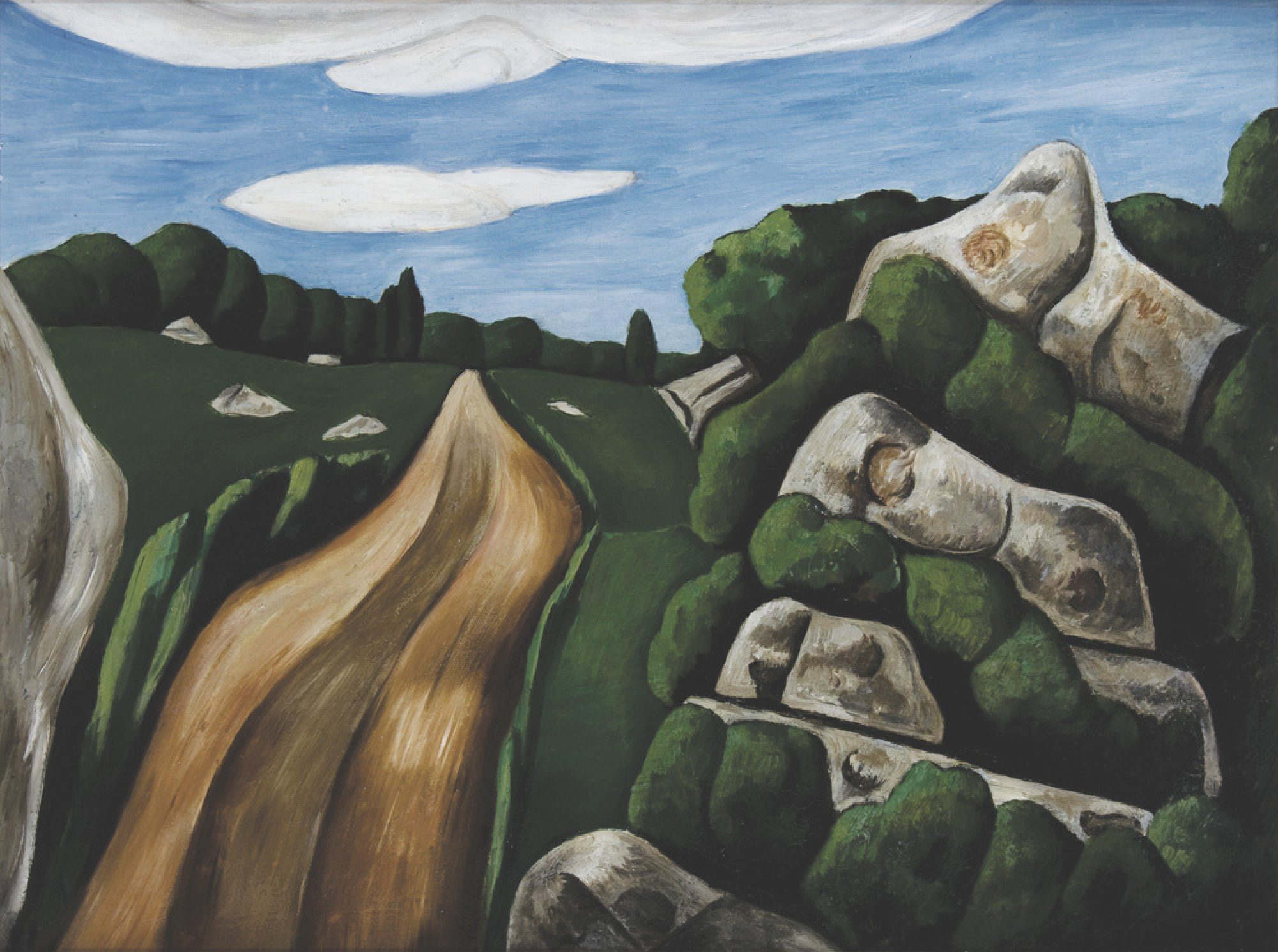Trail Site #12 : Edward Hopper’s Mansard Roof, 2 Clarendon Street
DIRECTIONS: From the galleries on the wharf, walk back to Rocky Neck Avenue, turn left and then turn right onto Horton Street. Take the first left onto Clarendon Street and walk all the way up the hill to #2, the Mansard Roof House on the right, near the bend in the road.

Edward Hopper (1882-1967) described Rocky Neck as “The residential district where the old sea captains had their houses.” He painted The Mansard Roof here in 1923. It is an elegant building with an asymmetrical composition, corner tower, mansard roof and, “a dynamic balance of rope trim, bracketed cornices and pediments, and porch and stair balustrades.” The “Hopper House” was originally part of the large estate of Augustus Wonson, a founder of the Tarr and Wonson Copper Paint Manufactory. The Paint Factory can be seen down the hill, at the mouth of Gloucester’s inner harbor, to the left of the “Hopper House”.
Edward Hopper remains one of America’s most honored and beloved artists. He was born in Nyack, New York, on the Hudson River. He studied to be a commercial artist at the New York School of Illustrating but transferred to the New York School of Art to study fine art. His teachers there included William Merritt Chase and Robert Henri. Although he sold an oil painting called Sailing at the famous international Armory Show of 1913, he did not achieve immediate success. Hopper spent nearly twenty unsatisfying years working as an illustrator before his 1923-24 watercolors, painted in Gloucester, catapulted him to fame.
While vacationing in Gloucester in 1923, Jo Nivison, whom Hopper later married, suggested he try working in watercolors. These paintings brought him his first real acclaim. The Brooklyn Museum purchased The Mansard Roof after it was featured in their 1923 watercolor show. This was followed by a one-man show at Frank K.M. Rehn’s Gallery in New York City, which included sixteen of Hopper’s watercolors and was a sell-out. This turning point in his career established him as a quintessential American realist.
Hopper spent nearly every summer in New England and wintered in New York City. His first visit to Gloucester was in 1912 and he returned in 1923, 1924, 1926 and 1928. His compelling images of urban scenes often provided momentary glimpses into the lives of strangers, such as his well-known paintings Nighthawks, Chop Suey, and Automat, while his summer scenes were frequently plays of light and shadows on houses and lighthouses.

